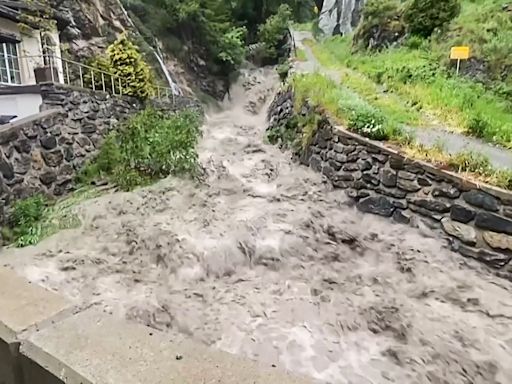Search results
4 days ago · Landslide, the movement downslope of a mass of rock, debris, earth, or soil. Landslides occur when gravitational and other types of shear stresses within a slope exceed the shear strength (resistance to shearing) of the materials that form the slope.
A landslide is defined as the movement of a mass of rock, debris, or earth down a slope. Landslides are a type of "mass wasting," which denotes any down-slope movement of soil and rock under the direct influence of gravity.
Apr 26, 2024 · A landslide is the movement of rock, earth, or debris down a sloped section of land. Landslides are caused by rain, earthquakes, volcanoes, or other factors that make the slope unstable. Geologists, scientists who study the physical formations of Earth, sometimes describe landslides as one type of mass wasting.
Landslides, also known as landslips, [1] [2] [3] are several forms of mass wasting that may include a wide range of ground movements, such as rockfalls, mudflows, shallow or deep-seated slope failures and debris flows. [4] .
The official music video remastered in HD for Fleetwood Mac - "Landslide" from the 1975 album "Fleetwood Mac". Fleetwood Mac’s 50 Years – Don’t Stop is available to order now and be sure to ...
Landslides are the downslope movement of earth materials (rock, debris, and soil) at rates that range from inches per year to tens of miles per hour. Some landslides can move faster than a person can run. Landslides can happen with no notice or can take place over a period of days, weeks, or longer. Sources/Usage: Public Domain. View Media Details.
Landslides are the downslope movement of earth materials (rock, debris, and soil) at rates that range from inches per year to tens of miles per hour. Some landslides can move faster than a person can run and can happen with no notice or can take place over days, weeks, or longer.
Landslides are caused by disturbances in the natural stability of a slope. They can accompany heavy rains or follow droughts, earthquakes, or volcanic eruptions. Mudslides develop when water rapidly accumulates in the ground and results in a surge of water-saturated rock, earth, and debris. Mudslides usually start on steep slopes and can be ...
The term "landslide" describes a wide variety of processes that result in the downward and outward movement of slope-forming materials including rock, soil, artificial fill, or a combination of these. The materials may move by falling, toppling, sliding, spreading, or flowing.
A landslide is a mass movement of material, such as rock, earth or debris, down a slope. They can happen suddenly or more slowly over long periods of time. When the force of gravity acting on a slope exceeds the resisting forces of a slope, the slope will fail and a landslide occurs.



